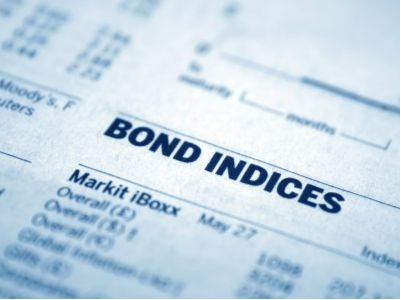Schroder: Five reasons supporting the future prospects of local currency bonds in Asia.
2024-11-14 14:33
Schroder wrote that over the past five years, the performance of Asian local currency bonds has been better than other major bond markets, showing a considerable resilience to declines. He is optimistic about the future prospects of Asian local currency bonds.
Schroders Global report stated that over the past five years, the performance of Asian local currency bonds has been better than other major bond markets, showing significant resilience against market downturns. According to the Markit iBoxx Asian Local Bond Index, the cumulative return in US dollars reached 14.8%, far exceeding other composite indices. Schroders Global believes that with the Federal Reserve's rate-cutting cycle, improved economic prospects in Asia, relative independence, and international investor recognition, the future of Asian local currency bonds looks promising.
The Asian local bond market is mainly composed of government bonds and quasi-sovereign issuers, with high average sovereign credit ratings due to good credit indicators such as debt-to-GDP ratio, external debt ratio, current account balance, foreign direct investment, and growth prospects. Looking ahead, Schroders Global believes there are five reasons to be optimistic about Asian local currency bonds.
First, inflation returning to target provides room for rate cuts in Asia, benefiting local currency bonds.
With the Federal Reserve starting a rate-cutting cycle, Asian interest rates are expected to benefit, with central banks in the region likely to follow suit with rate cuts. Most countries' inflation has returned to target levels, and real interest rates are starting to be on the high side. It is worth noting that with the clearer trend of the federal funds rate, the Bank of Indonesia was the first to cut rates by a quarter basis point to 6.00% on September 18, before the Federal Reserve. The softening dollar performance and market expectations of further rate cuts by the Fed have led to a strengthening of Asian currencies, allowing central banks in Asia to focus more on local factors such as economic growth, inflation, and financial stability when formulating monetary policy.
Second, as interest rate differentials narrow, the potential for a weaker dollar is positive.
With the Federal Reserve having limited tolerance for further slowing of the labor market and starting a rate-cutting cycle with a half-point risk management cut, the bank believes the dollar has room to fall as interest rate differentials between the US and Asia gradually narrow. It is worth noting that Asian exporters expect the dollar to strengthen further, as they have priced their exports in dollars. However, as business prospects become challenging, more and more companies may convert dollar-denominated funds into local currency, which is expected to support the performance of Asian currencies.
Third, improved growth prospects in Asia boost market risk sentiment.
Benefiting from continued inflation decline, loose monetary policy, fiscal stimulus measures, and export growth driven by the technology industry, Asia's economic growth is expected to remain resilient. The outlook for Southeast Asia is particularly optimistic, as the region benefits from its downstream positioning in the information technology (IT), artificial intelligence (AI), and electronics supply chains, driving favorable trade dynamics. Overall, it is believed that this growth trend in Asia will help enhance the sovereign credit ratings of Asian countries, while also strengthening investors' risk appetite for local bond markets.
Fourth, gaining international investor recognition through inclusion in indices.
Chinese government bonds have been included in three major bond indices. India is set to be included in the J.P. Morgan Global Bond Index - Emerging Markets (GBI-EM) from June 2024, while South Korea is set to be included in the FTSE Russell World Government Bond Index (WGBI) from November 2025. With global index providers and international investors increasingly recognizing Asian local currency government bonds, this asset class is expected to attract structural inflows of funds from global investors as their allocation to such assets remains low.
Fifth, attractive risk-adjusted returns and low correlation with other bond markets.
In recent years, inflation pressures in the Asian region have been relatively mild compared to developed markets, mainly due to its prudent fiscal policies and traditional monetary policy. This has resulted in lower volatility in Asian interest rate markets, with Asian government bonds outperforming other government bond markets (such as the US, G7 countries, and emerging markets) in risk-adjusted returns. Additionally, with lower correlation to other markets, Asian government bonds become an ideal tool for risk diversification, helping to improve overall portfolio risk management effectiveness.
With several major central banks entering rate-cutting cycles, alongside the potential downward trend of the dollar, strong sovereign fundamentals, resilient growth prospects, and increased capital allocation from international investors, Asian local currency bonds are expected to continue to show strong performance.
RECOMMEND

AMAC: In January, 137 new asset-backed special plans were filed, with a total scale of 1122.64 billion yuan.
26/02/2025

Schroder Investment: Investors should consider allocating funds to securitized credit and insurance-linked securities.
26/02/2025

Reuss County Asset Annual Reflection: Policy Tipping Point is very clear. The semiconductor industry in 2025 is a game for the brave.
26/02/2025


